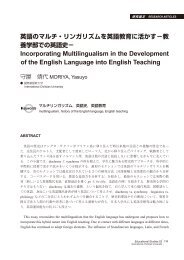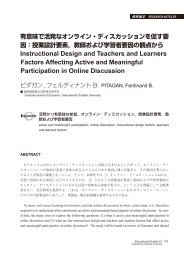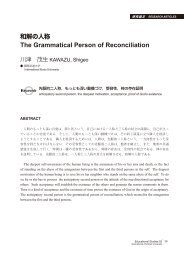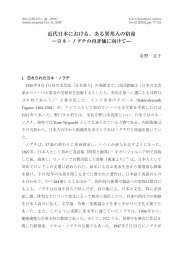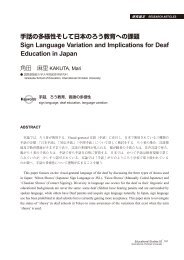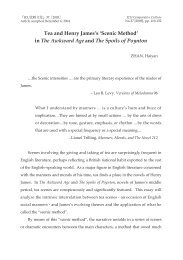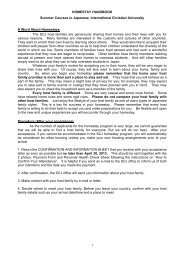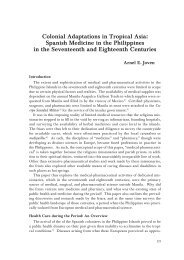Untitled - subsite - å½éåºç£æ大å¦
Untitled - subsite - å½éåºç£æ大å¦
Untitled - subsite - å½éåºç£æ大å¦
Create successful ePaper yourself
Turn your PDF publications into a flip-book with our unique Google optimized e-Paper software.
44<br />
received positive popular acceptance. Piyaporn is admiringly praised for her efforts<br />
at breaking the taboo against sexual violence. This taboo-shattering is most evident<br />
in her portrayal of a heroine who is raped. Traditionally, no one else, except the male<br />
protagonist, could break the virginity of the heroine, so the heroine remains chaste and<br />
virginal until she meets and marries the hero. Piyaporn breaks this literary tradition<br />
by presenting a heroine who is raped when she was young. However, it must be<br />
noted that although Fah is no longer a virgin, she is not yet a wife. She leaves Kris,<br />
her husband, on the night of their marriage and does not consummate it with him.<br />
When we disregard the fact that she is raped, she is eligible for Manta, the hero of the<br />
novel. In addition, the author also takes care not to include any details too distasteful<br />
for the sensibility of her middle class target audience. According to Kathleen C. Basile<br />
(2005), the impact of rape on the victims behaviors includes alcohol and drug abuse,<br />
risky sexual behaviors, and smoking (p. 112); Piyaporn selects for the heroine those<br />
psychological effects such as the fear of sex and fainting which her middle class readers<br />
find acceptable. Therefore, the reader could still identify and sympathize with the<br />
heroine because she is otherwise a perfect embodiment of feminine virtues except that<br />
she was raped.<br />
The author focuses on female consciousness as an outcome of womens shared<br />
gender oppression. All female characters in the novel are aware that as women they<br />
are vulnerable to rape and other sexual assaults. However, the positive response to<br />
universal female consciousness tends to override the multiplicity of differences among<br />
women and the ways in which female consciousness reinforces and conflicts with other<br />
forms of consciousness. The problem of universal female consciousness is reflected<br />
in the treatment of two sexually abused characters: Jiranan and Dao. Both function in<br />
the novel as foils to the heroine. Jiranan is described as an independent, modern and<br />
outgoing woman. She contrasts sharply with Fah, a conservative, virtuous heroine. As<br />
a result, the reader feels less sympathy for Jiranan than for Fah, even though Jiranans<br />
story is appropriated to highlight the courage of the heroine in her breaking of silence.<br />
Doas story is important in that it highlights the failure of the legal system to bring<br />
justice to women who want to fight back against sexual violence. The pain and suffering<br />
she goes through parallels that of the heroines journey of self-discovery. However, it is<br />
not Dao, but Fah, the heroine, on whose pain the novel focuses and who needs healing.



